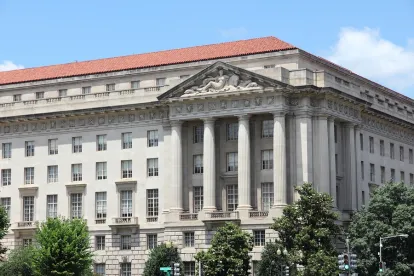On October 19, 2020, the U.S. Environmental Protection Agency (EPA) published an historic final rule that establishes Agency-wide procedures and requirements for issuing guidance documents consistent with Executive Order 13891 (“Promoting the Rule of Law Through Improved Agency Guidance Documents”).[1]
As we covered in our previous article, the rule defines which documents are “guidance” subject to the rule, establishes general requirements and procedures for certain Agency-issued guidance documents, and specifies additional requirements for guidance documents determined to be “significant.” The final rule defines the term “active guidance document” to mean a guidance document in effect that EPA expects to cite, use, or rely upon. Such active guidance documents must be posted to a single EPA online portal. The rule also establishes procedures for the public to petition for the withdrawal or modification of active guidance documents. Significantly, the final rule adds a procedure that was not included in the proposal, under which the public can petition the Agency for the reinstatement of a rescinded guidance document.[2]
In accordance with E.O. 13891, the rule establishes a single, searchable, and indexed EPA guidance portal for all active guidance documents. Several times this year, the Office and Management and Budget (OMB) extended EPA’s deadline to finalize its guidance portal,[3] with the ultimate deadline expiring on July 31, 2020[4]. While EPA has not indicated any plans to supplement the portal with additional guidance documents, the November 18, 2020 effective date of the guidance rule may provide cover for EPA to add guidance documents to the portal in the next several weeks if requested by industry. By November 18th, any document that is “guidance” under the definitions in the rule should be considered rescinded if it is not posted in EPA’s guidance portal.
As EPA developed its guidance portal, a significant point of contention and concern was the impact on EPA opinions and other correspondence that had been provided to individual companies and trade associations in response to questions regarding compliance and regulatory interpretation. For instance, EPA’s “Applicability Determination Index” serves as a repository of EPA correspondence and opinions concerning the Clean Air Act, and is frequently consulted by regulated parties to understand how these provisions have been applied to other similarly situated companies. Ultimately, EPA determined that the ADI documents were not “guidance” within the scope of the E.O. and EPA’s rule, and posted a clarification on the subportal for the Office of Air and Radiation (OAR):
“EPA’s Office of Air and Radiation notes that certain agency documents, including statements of specific, rather than general, applicability, are excluded from the definition of guidance document under Executive Order 13891 and therefore may be excluded from this guidance portal. Specifically, EPA may exclude communications or statements regarding particular locations or facilities, and correspondences with individual persons or entities. For the same reason, such documents are not deemed to be rescinded by virtue of the fact that they have been excluded from this portal.”[5]
EPA defines the term “guidance document” consistent with the definitions in E.O. 13891 and the Office of Management and Budget’s (OMB) implementing memorandum, which includes the term “technical issue.” EPA states that “[d]ue to the diversity of purpose and content of scientific and technical documents, it would be inconsistent with E.O. 13891 for the EPA to categorically determine whether all scientific and technical documents are ‘guidance documents.’” Accordingly, scientific and technical documents not posted to EPA’s portal must be assessed on a case-by-case basis to determine whether they constitute “guidance” within the meaning of the rule and, thus, whether they are rescinded or still reliable.
The rule also sets forth procedures for the public to petition for the modification, or withdrawal of an active guidance document, or reinstatement of a rescinded guidance document. Information about petitions received (including the title of the relevant guidance document) will be made publicly available. EPA cautions that if a petition does not satisfy the content requirements specified in the rule, EPA may decide not to consider the petition under the rule. The rule states that EPA “should” respond to a petition in a “timely manner,” but must respond no more than 90 calendar days from receipt. EPA may extend the response date one time for any reason but must notify the petitioner as to the basis for the extension and an estimated response date, and may not extend for more than 90 days.
For example, with respect to the Toxic Substances Control Act (TSCA), EPA’s guidance portal includes more than 170 documents.[6] This list includes critical documents on Inventory representation (e.g., TSCA nomenclature), as well as more than ten fact sheets impactful to the 2020 TSCA section 8(a) Chemical Data Reporting Rule. But, as is the case for Clean Air Act “guidance,” many of the most instructive interpretations from the Agency have been provided over the years to individual companies. While the Office of Chemical Safety and Pollution Prevention (OCSPP) subportal does not include a similar clarification as the OAR statement quoted above, similar logic would suggest that companies can and should continue to rely on the historical interpretations provided by Agency staff.
[1] EPA Guidance; Administrative Procedures for Issuance and Public Petitions, 85 Fed. Reg. 66,230 (Oct. 19, 2020).
[2] 84 Fed. Reg. at 66, 239; cf. EPA Guidance; Administrative Procedures for Issuance and Public Petitions, 85 Fed. Reg. 31,104 (May 22, 2020).
[3] By February 28, 2020, each Federal agency was to review and rescind any current unnecessary guidance, provide a mechanism for the public to petition for withdrawal or modification of guidance, and (per the October 31, 2019 Office of Management and Budget implementing memo) establish a single, searchable, indexed website that contains, or links to, all of the agencies’ respective guidance documents currently in effect. See “Memorandum for Regulatory Policy Officers at Executive Departments and Agencies and Managing and Executive Directors of Certain Agencies and Commissions, available at: https://www.whitehouse.gov/wp-content/uploads/2019/10/M-20-02-Guidance-Memo.pdf. EPA announced the availability of its public guidance portal on February 28, 2020. Notice of Public Guidance Portal, 85 Fed. Reg. 11,986 (Feb. 28, 2020).
[4] 84 Fed. Reg. at 66,233.
[5] Guidance Documents Managed by the Office of Air and Radiation, available at: https://www.epa.gov/guidance/guidance-documents-managed-office-air-and-radiation.
[6] See Guidance Documents Managed by the Office of Chemical Safety and Pollution Prevention (OCSPP), available at: https://www.epa.gov/guidance/guidance-documents-managed-office-chemical-safety-and-pollution-prevention-ocspp.





 />i
/>i
